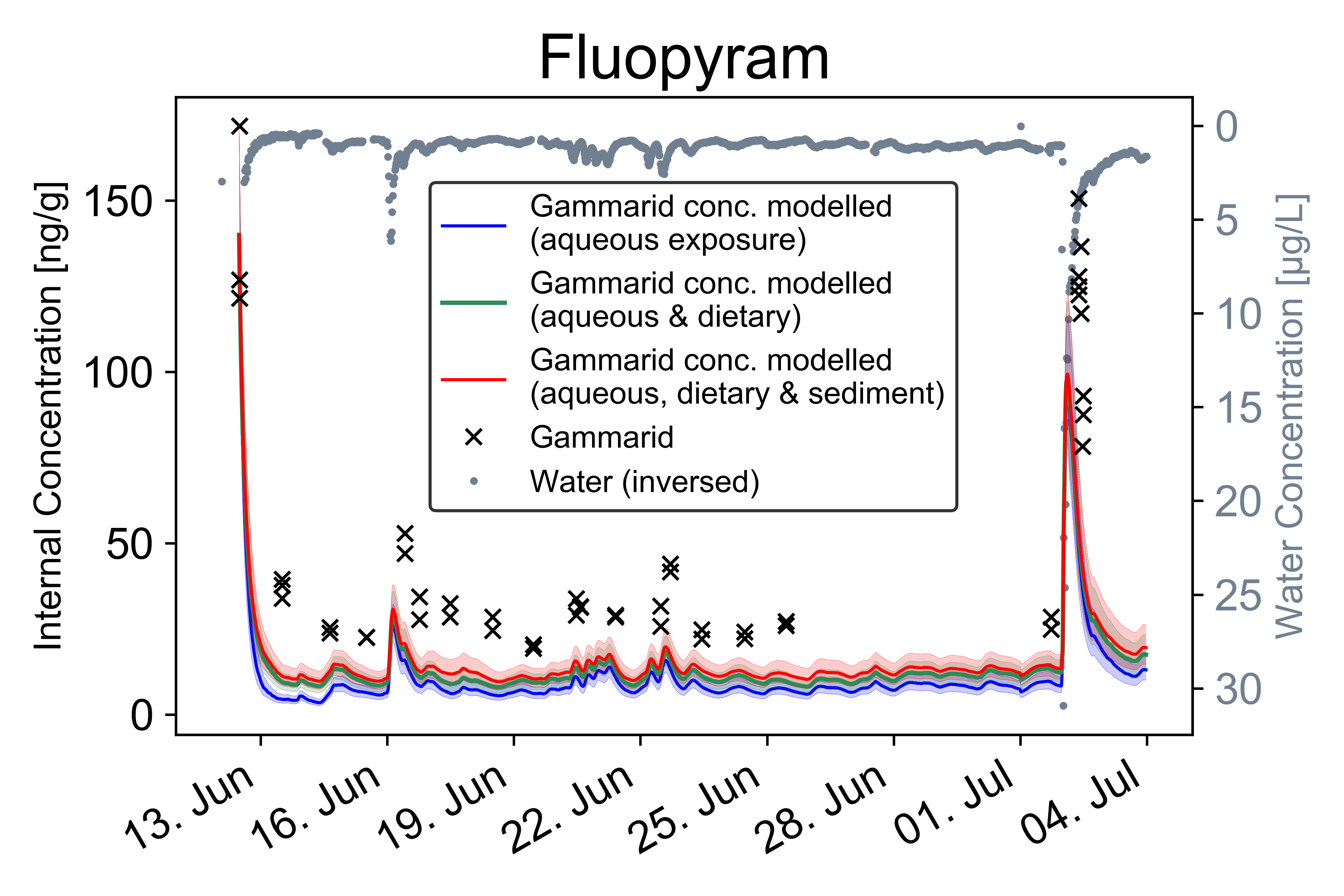Investigating the Applicability of Laboratory derived Toxicokinetics to the Field
Knowledge on bioaccumulation and biotransformation of organic micropollutants are essential to link exposure to effect and to designate appropriate environmental quality standards. Bioaccumulation and biotransformation of organic micropollutants in aquatic organisms have been investigated in laboratory experiments extensively. For several micropollutants, especially pesticides, however, the measured internal concentrations in gammarids in field trials exceeded the predictions based on the laboratory data, sometimes by multiple orders of magnitude.
In this work, we tested the applicability of laboratory derived toxicokinetic rate constants for caged gammarids deployed in a small Swiss stream known for high pesticide loads. Using an automated mobile LC-ESI-HRMS/MS system, the aqueous concentrations of 49 pesticides were measured at high temporal resolution throughout several rain events during the application season (every 20 min for 1 month). The water concentrations from this study were then employed to model the whole body concentration of gammarids using a one-compartment toxicokinetic model with toxicokinetic rate constants derived in an accompaning lab study. This data was then compared to the measured whole body concentration of the caged gammarids. Furthermore, the pesticide concentrations in the stream sediment, dietary source (leaves) as well as in suspended particles during rain events were measured and used to model their effect on the bioaccumulation of the pesticides.
Our results show that the internal pesticide burden of gammarids is highly dynamic, with the aqueous exposure as the main influencing factor. While the laboratory derived toxicokinetic rate constants predicted the temporal trends in whole body concentrations reasonably well, the values were systematically underestimated over the whole time period. The highest underestimation occurred shortly after rain events with the model underestimating the pesticide concentrations by a factor of up to 31 ± 3.0. Finally, we demonstrated that while uptake from sediment does not contribute significantly to the total body burden even under worst case uptake assumptions, the suspended solids had considerably higher pesticide concentrations than the sediment and could explain the observed underestimation after rain events partially. Further possible reasons such as decreased biotransformation under field conditions or concentration dependence of the toxicokinetics are currently explored.
